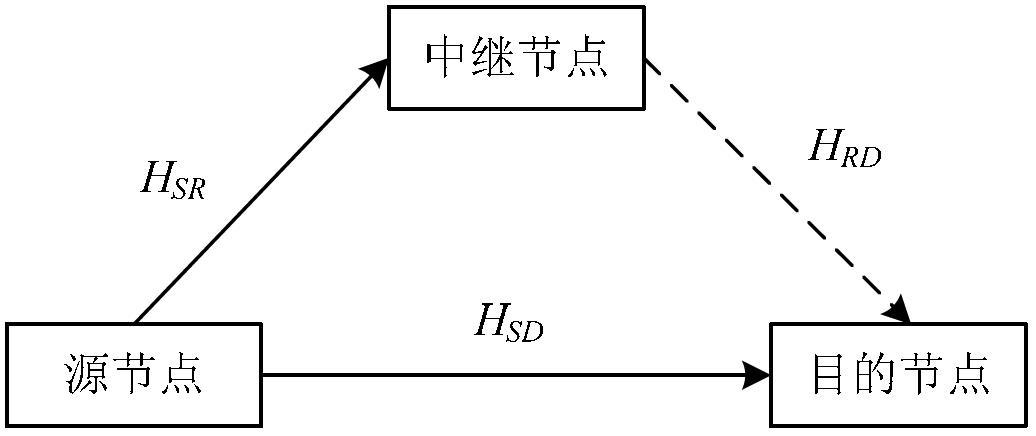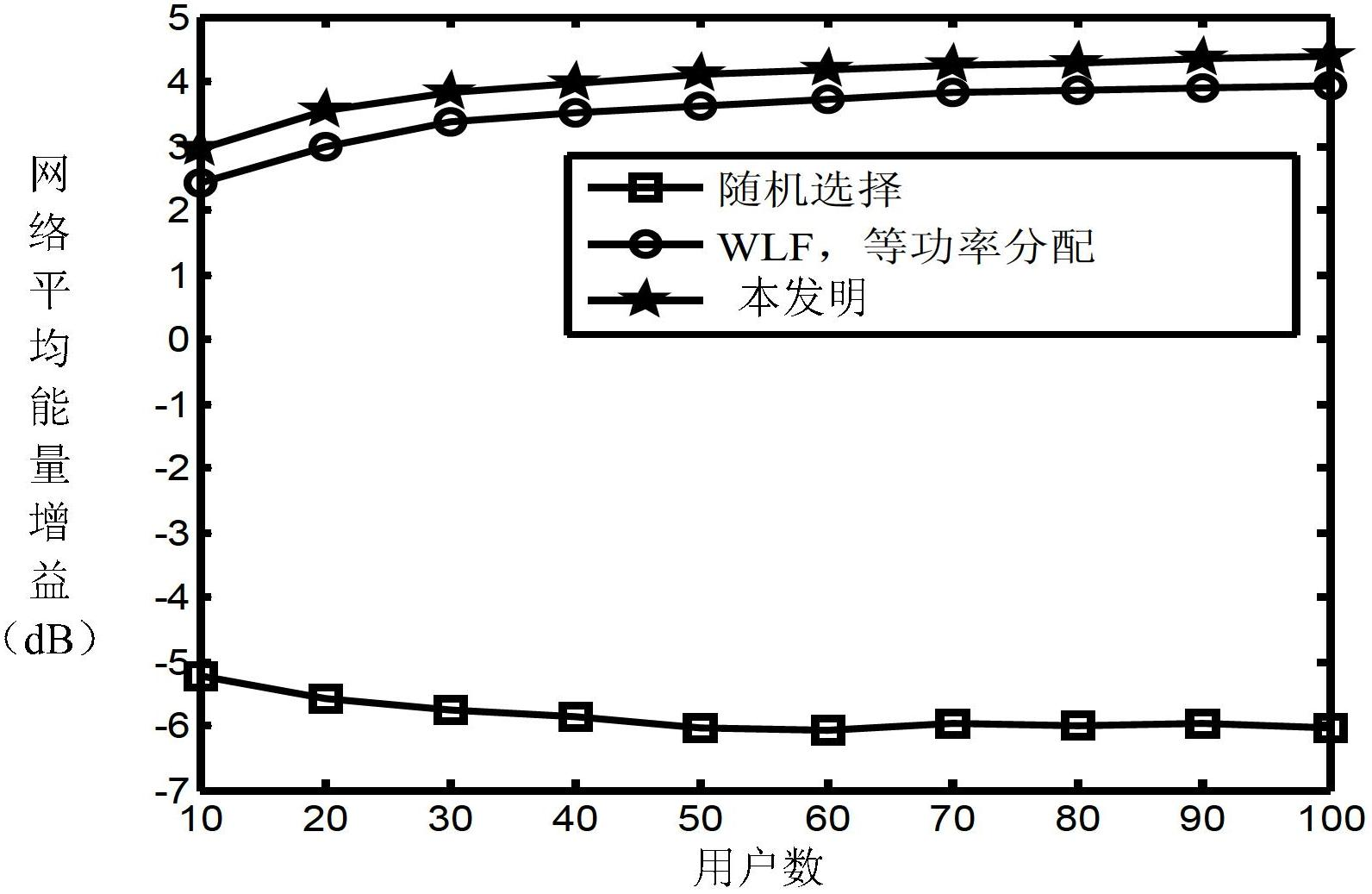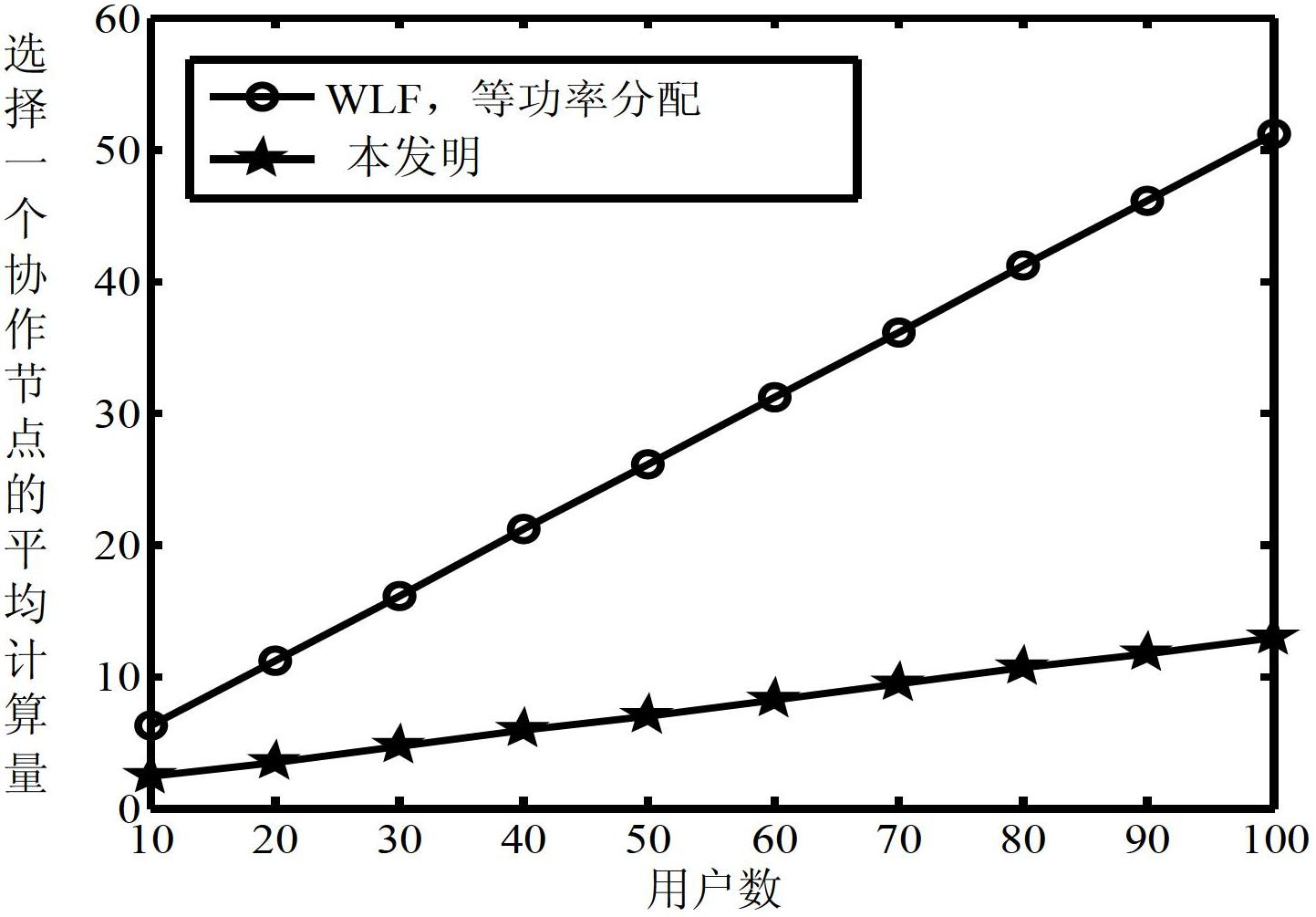Power allocation combining multi-antenna terminal cooperation type multiple input multiple output (MIMO) relay selection method
A multi-antenna, cooperative technology, applied in diversity/multi-antenna systems, power management, wireless communication, etc., can solve the problems of matching users to the best relay, high computational complexity, and difficult application of the system, so as to reduce energy Consumption, improved system performance, and low computational complexity
- Summary
- Abstract
- Description
- Claims
- Application Information
AI Technical Summary
Problems solved by technology
Method used
Image
Examples
specific Embodiment approach 1
[0017] Embodiment 1. A multi-antenna terminal cooperative MIMO relay selection method combined with power allocation, which is implemented by the following steps:
[0018] Step 1: Select the value of the signal-to-noise ratio ξ between the base station and the base station at unit transmit power from all user sets that have not found a relay node i is the smallest user i, i is a random integer between 1 and the total number of users in the user set that has not found a relay node, and calculates the user i in the direct transmission mode to ensure that the bit error rate is not greater than the preset value p e The required minimum transmit power P nci ;
[0019] Step 2. Judging whether there is any user set in the candidate relay node that simultaneously satisfies ξ ij > ξ i and ξ j > ξ i M users, M is a positive integer, j is a positive integer, if the judgment result is no, execute step 21; if the judgment result is yes, execute step 22; where: ξ ij is the value of th...
PUM
 Login to View More
Login to View More Abstract
Description
Claims
Application Information
 Login to View More
Login to View More - R&D
- Intellectual Property
- Life Sciences
- Materials
- Tech Scout
- Unparalleled Data Quality
- Higher Quality Content
- 60% Fewer Hallucinations
Browse by: Latest US Patents, China's latest patents, Technical Efficacy Thesaurus, Application Domain, Technology Topic, Popular Technical Reports.
© 2025 PatSnap. All rights reserved.Legal|Privacy policy|Modern Slavery Act Transparency Statement|Sitemap|About US| Contact US: help@patsnap.com



